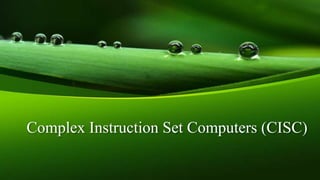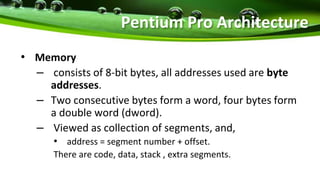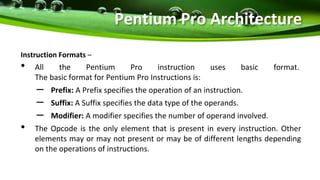- CISC uses a large set of complex machine language instructions that can take more than one clock cycle to execute. It has fewer registers and performs operations in memory.
- The VAX architecture is a 32-bit CISC instruction set with 16 general purpose registers and variable length instructions. It uses virtual memory addressing and has different data formats for integers, characters, and floating point numbers.
- The Pentium Pro architecture is a 32-bit RISC design with 8 general purpose registers and 32-bit fixed length instructions. It supports different addressing modes and data types, including integers, characters, and single, double, and extended precision floating point formats.


















